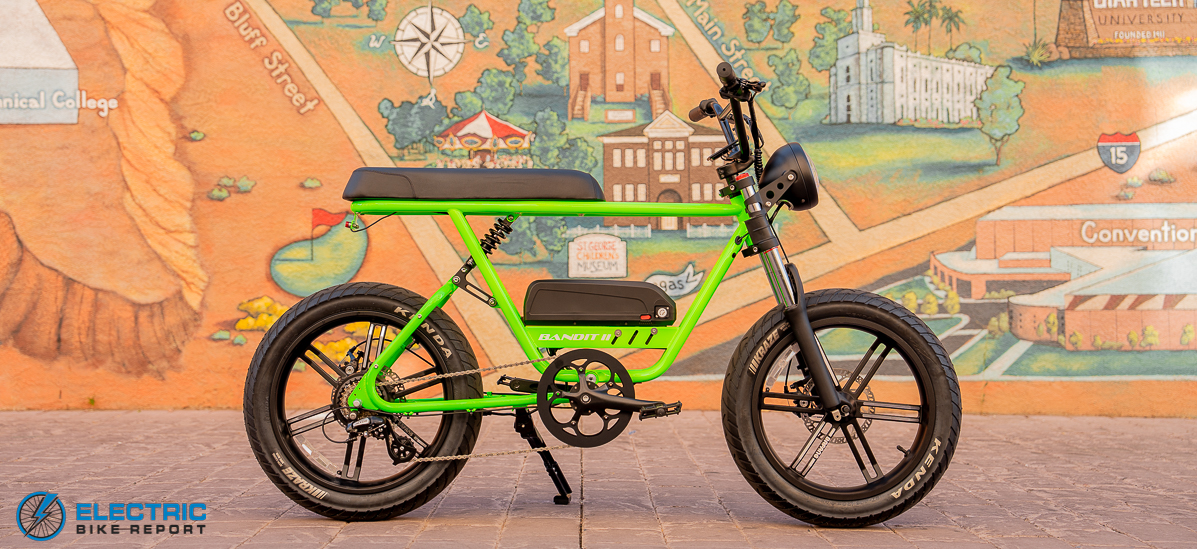In our Speed Test, we tracked the Bandit’s top speed in each of the five pedal assist system (PAS) modes. The results tell us what top speeds we should expect as we shift through all five of the PAS levels during our rides. The chart above details this bike’s speed output at each level.
The chart above details the PAS top speeds with basic pedaling. The Bandit’s low sitting stationary seat limits most riders’ leg extension, so the Bandit pedals like most other moped e-bikes. Pedaling in PAS 0 was a challenge, and I only got the bike up to 9.2 mph. Welcomed relief came when pedaling in PAS 1 I reached 11.4 mph. PAS 2 helped me reach 13.6 mph, PAS 3 gave a surge to 16.4 mph, PAS 4 saw a slight gain to 17.4 mph, and PAS 5 topped at 18.9 mph. These were decent cap speeds for this kind of Class 2 e-bike.
It’s worth stating that moped-style e-bikes aren’t fun for most people to pedal, mainly because the seat height cannot be adjusted, so it sits too low to give most riders decent leg extension. I stand at 6’0” and my hips were sore after pedaling this bike for 71 straight miles in one of my test rides.
But moped riders aren’t concerned with pedaling when motoring around town only using the throttle. Sure, the battery runs out quicker when you’re not pedaling, but most riders will agree that pedaling is not what they’re thinking about when they’re planted on the seat of their moped e-bike, humming along at 20 mph.
Riders who want to try to take it up to 28 mph, and put in the necessary pedaling, will enjoy the added boost. Our test bike came as a Class 2, limited to 20 mph using either throttle or pedal assist. It only took a couple steps to unlock the Bandit to its Class 3 setting. If you’re planning to ride this only on the street, then Class 3 will be your best bet, because you will appreciate that extra speed you can get out of your pedaling.
Important note, the Shimano Alivio 7-speed gearing uses a 14-28T cassette that ghost pedals at higher speeds in PAS 4 and 5. It was more pronounced in PAS 5 but I did feel it at the top end while pedaling in PAS 4, too. We think it would be great if Superhuman changed up and started putting 11-28T cassettes on the Bandit instead. Doing that might not completely eliminate ghost pedaling, but it will make a noticeable improvement.
I pedaled the Bandit over 80 miles before finally testing it in Class 3 mode. I quickly adapted to primarily using the throttle. Doing that made my rides more fun. I found I didn’t have to pedal so much, but I only topped it at 25 mph in PAS 5. The throttle helped fill in the PAS gaps, giving me that quick burst of speed when I needed it. Ultimately, the thing to remember is the bike’s moped design makes most riders like the throttle more than they like the pedals.
.
.
.
#Superhuman #Bandit #EBike #Review #Electric #Bike #Report
Source link









